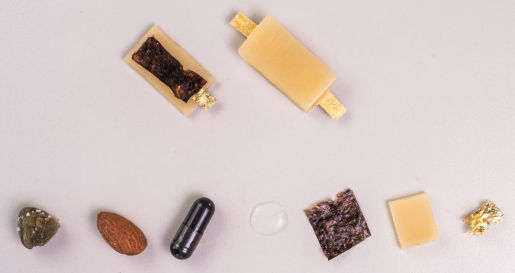

We promise you even though the title of this article sounds like an April Fool’s Day post, we’re completely serious. It’s a wild world out there, and your charging cable needs a condom.
What Is a USB Condom?
USB condoms function, in the hardware space, like the real-world condoms they derive their name from. Actual condoms serve as contraceptives and prophylactics, ensuring you don’t walk away from an encounter with something you don’t want (be it an unplanned pregnancy or a disease).
USB condoms ensure you have the same experience with your devices—that you walk away from plugging your phone into an unknown charger without any malware or problems.
Never considered the risk of plugging your phone to charge into a random USB port at the airport or on a bus? You should. There’s a form of attack called “juice jacking,” wherein malicious actors can use exploits to gain access to your phone via the USB charging cable.
Over the years, researchers have demonstrated attacks that steal your Google credentials, mirror your phone screen so you can be spied upon, and even take control of the entire mobile operating system.
Thankfully, these exploits are patched quickly each time, and there are no recorded instances of juice jacking in the wild outside of demonstrations at security and hacker conventions. But it’s safe to assume that if some security researchers can figure out an exploit and deploy a working proof-of-concept attack to show off at a convention, such exploits can appear in the wild, and you should act accordingly. Enter the USB condom.
A USB condom, also called a power-only USB adapter, is a really simple device. Whether you use a USB-C cable, a USB-A-to-micro USB cable, or a lighting cable, all USB cables have individual wires dedicated to tasks like power transmission, data transmission, and cable grounding.
The USB condom is an adapter you place between the USB port and the charger side of your USB cable. Inside the adapter plug, the data “pins” are missing. This means the individual power pins and the ground pin connect between the charger, the charging cable, and the phone, but there is physically no connection between the data pins on your phone port and the data pins on the charger.
Thus, if the charger station you’re using at the airport is compromised and in addition to supplying power it’s also attempting to probe your phone for vulnerabilities, it can’t because there’s no data connection between the station and your phone.
From a privacy and security standpoint, there is no downside. But there is one small downside, from a charging perspective, that comes with removing the data pins from the interaction. Modern devices that support fast charging use the data connection to communicate briefly with the charger to negotiate the fast charging speed. If the data connection isn’t there, the device falls back to a safe basic charging rate.
Where Can I Get a USB Condom?
USB condoms are cheap and easy to throw in your travel bag, so there’s no good reason not to have one on hand when you’re away from home.
But you’re not going to find them hanging on a rack with the regular charging cables and phone chargers in the electronics section of your local big box store, or even at a dedicated tech store like Best Buy. You’ll need to order your power-only USB condom online
Fortunately, there are some reputable companies with great and inexpensive adapters. You can grab the Pluggable USB-A to USB-A adapter, seen in the photo above.
There’s also a wide variety of adapters from PortaPow, including a USB-A to USB-A, a USB-A to USB-C, a USB-C to USB-A, and a USB-C to USB-C option. They even have a USB-A to USB-A clear model, seen below, that makes the missing data pins visible.
PortaPow Cased Power Blocker (Twin Pack)
This simple data blocking port adapter ensures only power (and not malware!) get sent over your charging cable. And the clear case gives you a cool peek at how the device works.
Various companies, including PortaPow, make dedicated data-blocking cables like this USB-A to USB-C cable. They work the same way as the USB condom adapters, but we don’t necessarily recommend them. The cables tend to be short, and you’re stuck using just that cable if you want the data-blocking protection.
If you use the stand-alone USB condom instead, then any cable you plug into the adapter works, whether it’s the little 3-foot cable that came with your phone or a 10-foot upgrade you picked up along the way.
However you do it, though, it’s a great privacy best practice always to use a USB condom when plugging your phone into a charging station, computer, or other USB devices you don’t have complete control over to ensure all you’re getting from the device is a free charge and not a malware payload.







